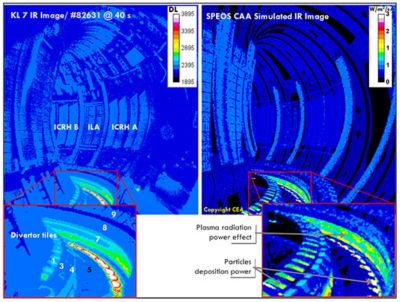-
-
学生向け無料ソフトウェアにアクセス
Ansysは次世代の技術者を支援します
学生は、世界クラスのシミュレーションソフトウェアに無料でアクセスできます。
-
今すぐAnsysに接続!
未来をデザインする
Ansysに接続して、シミュレーションが次のブレークスルーにどのように貢献できるかを確認してください。
国および地域
無料トライアル
製品およびサービス
リソースとトレーニング
当社について
Back
製品およびサービス
ANSYS BLOG
May 6, 2019
Engineers Are Designing a Hot Fusion Nuclear Reactor That Can Reach 150 Million Degrees Celsius
The day engineers determine how to sustain a hot fusion reaction will be historic. This is because fusion energy has the promise to solve most of the challenges associated with green and nuclear energy.
Some benefits of fusion energy include:
- Fusion reactions create non-radioactive waste (with the exception of the reactor itself).
- Fusion reactions do not release pollutants or greenhouse gases.
A tungsten (W) experimental superconducting tokamak (WEST) hot fusion reactor
- Fusion reactors can operate in any weather conditions and require little space.
- Fusion power offers continuous base-line power generation — while solar and wind power are intermittent.
So, what’s holding fusion power back? It turns out that fusion reactions require temperatures over 150 million degrees Celsius (270 million degrees Fahrenheit) to become self-sustaining. The main challenge for engineers is to find a safe and stable way to maintain and control those temperatures.
Using Ansys multiphysics software, France’s Atomic Energy Commission (CEA) aims to overcome the burning challenges associated with hot fusion reactions.
How Do Hot Fusion Reactors Get So Hot?
CEA uses plasma to get the tungsten (W) experimental superconducting tokamak (WEST) reactor up to temperature.
Plasma is the fourth state of matter — where electrons move independently from parent atoms.
Since plasma is conductive, running energy through it produces heat. However, as the plasma heats up, its resistivity decreases. As a result, this method can only get the WEST reactor up to a few tens of millions of degrees Celsius.
Simulation of the pressure distribution in a fusion reactor antenna’s cooling circuit
To continue raising the temperature, the WEST reactor uses antennas to transmit high-energy radio-frequency (RF) radiation into the plasma.
These antennas are very close to the fusion reaction. As a result, they have to survive extreme thermal loads in order to ensure safe operation of the WEST reactor.
Simulation can test if a fusion reactor’s antenna will survive the heat without risking any prototypes or equipment.
How Engineers Use Simulation to Ensure the Safe Operation of a Hot Fusion Reactor’s Antenna
Simulating a hot fusion reactor is a multiphysics problem. Therefore, CEA uses a series of solvers to model, test and optimize its WEST reactor and its antenna.
Multiphysics simulations link together and/or share information so they can model how real-world equipment would operate. Some of the simulation tools CEA uses to model the WEST reactor include:
Results from Speos simulation (right) are similar to the results from thermal sensors (left).
- Ansys Mechanical to model the structural integrity of the antenna.
- Ansys Fluent to model the thermal and fluid dynamics within the reactor’s cooling channels.
- Ansys HFSS to maximize the energy transfer from the antenna to the plasma.
- Ansys Speos to optimize and verify thermal sensors in the WEST reactor.


